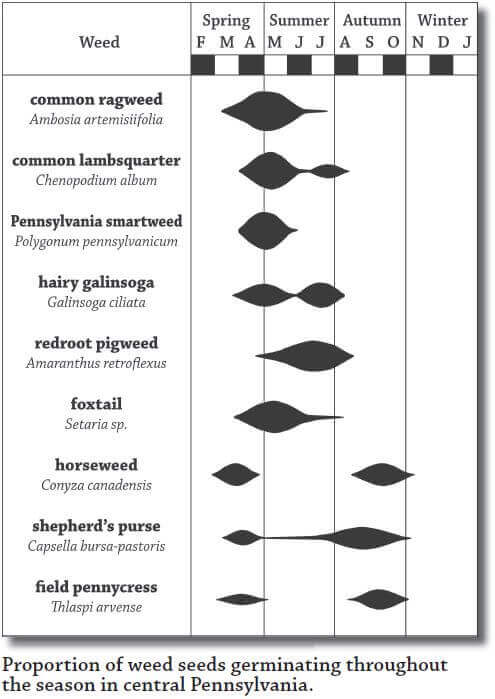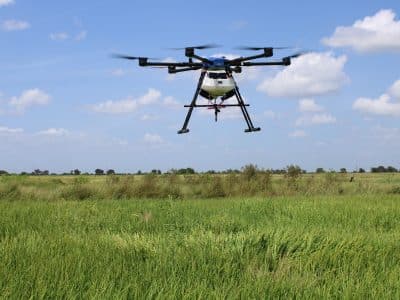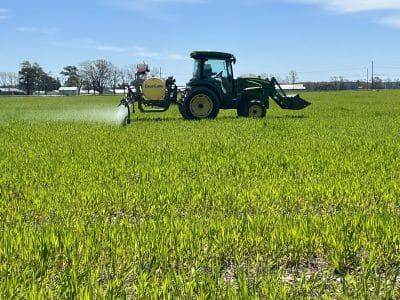
Strategic timing of tillage in the spring can help manage weed germination prior to cash crop planting. While tillage has long been regarded as an effective weed management tool for emerged weeds, tillage practices also have strong impacts on the seeds. The matter of when tillage happens affects the amount of weeds seeds that germinate, when they germinate, and which species will be most prevalent.
The soil disturbance caused by tillage can stimulate the germination of some weed seeds, while suppressing others. Each weed species requires a certain minimum amount of light and heat in order to germinate. For some species, this range is narrow and can only be achieved by pushing the seeds up to the soil surface, exposing them to sunlight and warmer temperatures. Additionally, some species can only germinate for a certain time period in the spring or summer, regardless of their environment. Tilling during the peak germination time for certain weed species will encourage that weed species to germinate. This is because tillage warms up the soil and brings some buried weed seeds to the surface where they are exposed to more light and heat. Small-seeded annual weeds such as lambsquarter, pigweed, and common ragweed are very responsive to the light and heat exposure at the soil surface. Large-seed species, however, can often germinate at deeper depths in the soil, meaning that they can germinate even if their seeds remain buried.

Tilling early in the season, such as late April-early May, coincides with the peak germination time for common ragweed and lambsquarter. This will stimulate higher germination of these early summer annual weeds, because the seeds take advantage of the increased light and heat offered by tillage. Delaying tilling until three to four weeks later may result in little or no common lambsquarter or ragweed to germinate. This is because they are past the point in the season when they are most likely to germinate even under ideal temperature and light conditions. In other words, they have gone dormant or “back to sleep” again.
Applying this to weed management in row crops:
Weed seed germination periodicity – The idea of delayed tillage and planting as a weed management practice is called weed seed germination periodicity. Planting later in the season takes advantage of the fact that many weed seed have “gone back to sleep” for the reminder of the field season. Implementing this technique may be particularly valuable in fields where early summer annuals are a major issue.
Stale seedbed technique – At the same time, early tillage (30 days prior to planting) can be strategically used as a technique to stimulate weed seed emergence, which then allows the producer to control those emerged weeds prior to crop planting. This is called the stale seedbed technique. These small emerged weeds can then be controlled by secondary light tillage, herbicides, or flaming so that the crop is planted into clean soil.
For more information, ask a question about it!
Resources:


